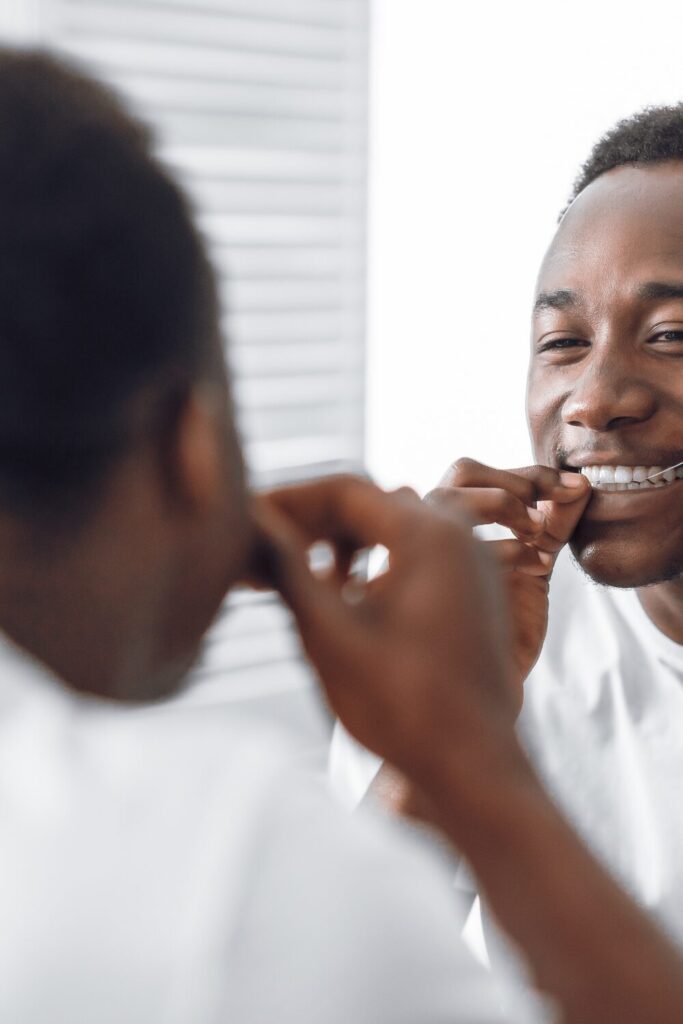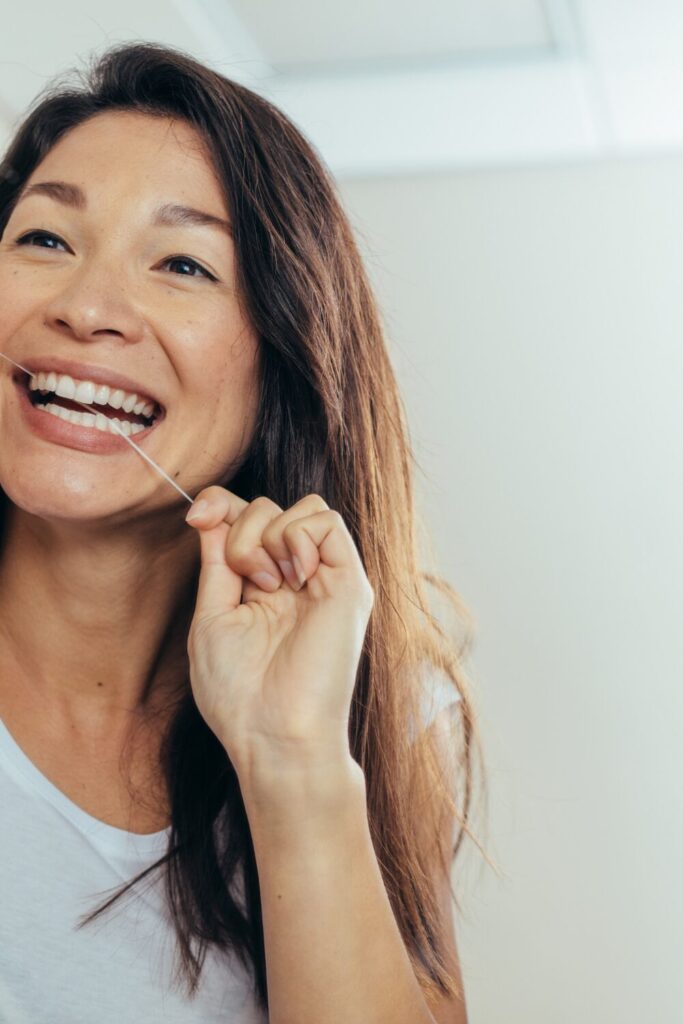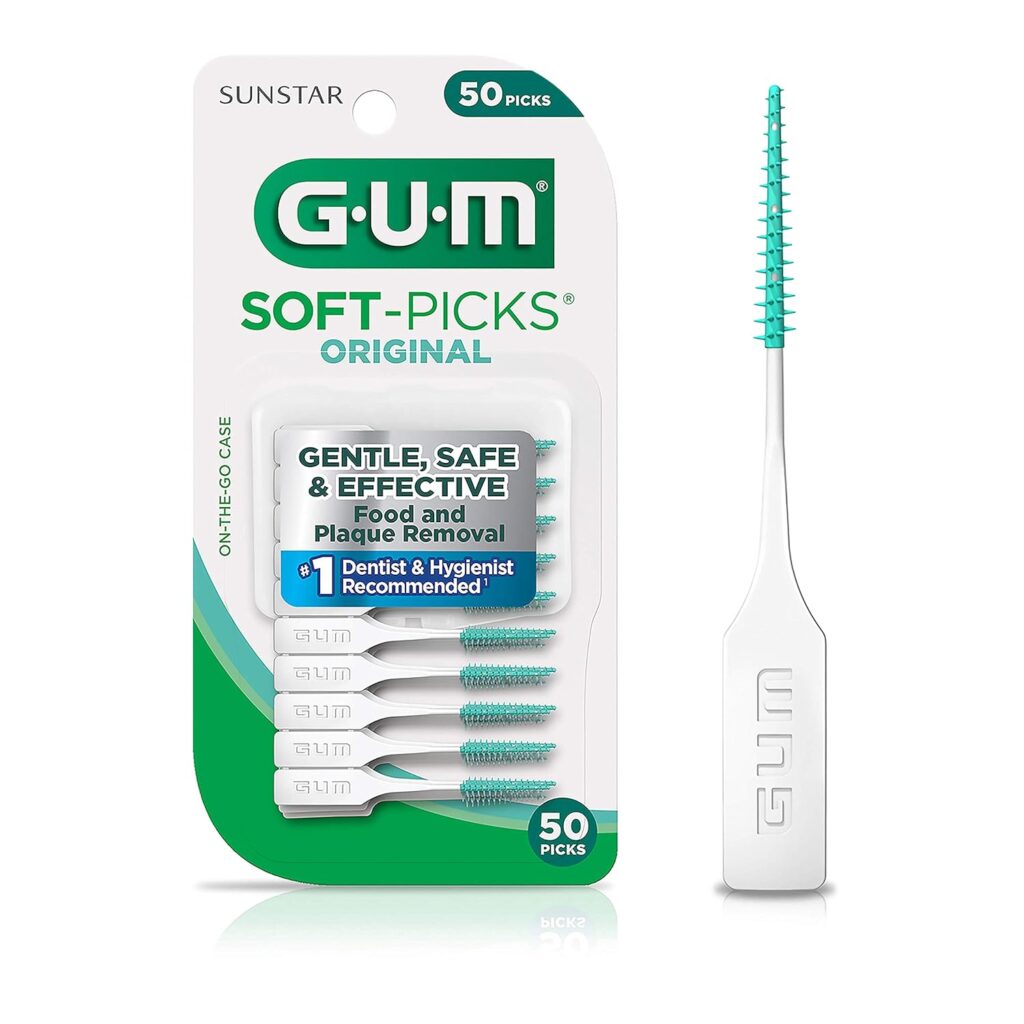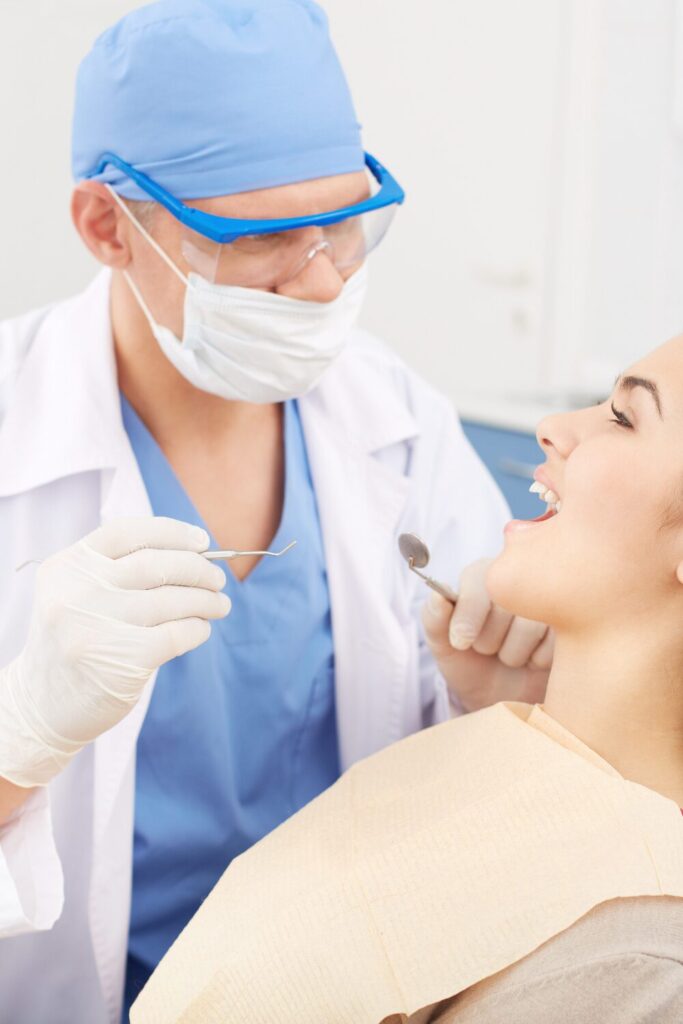Oral hygiene is a critical aspect of overall health, especially for people with permanent retainers. A permanent retainer, a thin wire fixed behind the teeth, is a standard orthodontic device used to maintain the position of teeth after braces. While highly effective in preserving that perfect smile, these retainers introduce unique challenges in dental care, particularly when it comes to flossing.

The Best Way To Floss With A Permanent Retainer
The main hurdle with a permanent retainer is its fixed nature. While hardly noticeable in daily life, this wire can be a significant obstacle during oral care routines. Traditional flossing methods are not as straightforward, as the wire impedes the natural movement of floss between the teeth. This situation calls for specialized flossing techniques and tools, such as floss threaders or water flossers, designed to efficiently maneuver around and under the retainer wire.
Moreover, the risk of plaque buildup and gum disease is heightened with permanent retainers. Food particles and bacteria can easily accumulate around the retainer wire and between the teeth, making thorough cleaning crucial.
Let’s walk through these challenges and break down step-by-step instructions, alternative flossing methods like interdental brushes, and essential maintenance tips for your permanent retainer.

Step-by-Step Flossing Guide with Permanent Retainers
Maintaining oral hygiene with a permanent retainer is crucial, but it can be challenging. This guide provides detailed instructions on how to floss effectively using both traditional floss and floss threaders, along with tips for safe and effective flossing.
Using Traditional Floss with a Floss Threader
- Gather Your Supplies: You’ll need dental floss and a floss threader, a small, flexible device that helps guide the floss under the retainer wire.
- Prepare the Floss Threader: Cut a piece of floss about 18 inches long. Thread one end through the eye of the floss threader, similar to threading a needle.
- Guide the Floss Under the Retainer: Insert the pointed end of the floss threader under the retainer wire near the gum line between two teeth. Gently pull the floss threader until the floss is under the retainer wire.
- Floss Between Your Teeth: Hold the floss with your fingers and gently slide it up and down against the sides of both teeth, forming a “C” shape around each tooth at the gum line. Be gentle to avoid harming your gums or dislodging the retainer.
- Remove the Floss Carefully: Gently pull the floss out from between the teeth and under the retainer wire. Do not snap or force the floss out, as this can cause damage.
- Repeat for Each Tooth: Use the floss threader to guide the floss under the retainer for each tooth. Use a clean section of floss for each space between the teeth.
Tips for Effective and Safe Flossing
- Be Gentle: Avoid snapping or forcing the floss, as this can damage the gums and the retainer.
- Take Your Time: Flossing with a permanent retainer can take longer than usual. Be patient and thorough with each tooth.
- Use a Mirror: Flossing in front of a mirror can help you see what you’re doing and ensure you’re flossing effectively.
- Regularly Change Floss Sections: Use a clean section of floss for each tooth to avoid transferring plaque.
- Consider Wax-Coated Floss: If traditional floss sticks or shreds, wax-coated floss might slide more easily.
- Daily Flossing: It’s essential to floss daily to prevent plaque buildup and maintain oral health.
Following these steps and tips, you can effectively floss with a permanent retainer, ensuring that your teeth and gums remain healthy and clean. Remember, while it may take a little extra time and effort, the health benefits are well worth it.

What is the purpose and benefits of permanent retainers?
Permanent retainers, also known as fixed retainers, play a crucial role in orthodontic care, particularly after the removal of braces. Their purpose and benefits are substantial in maintaining long-term dental health and alignment. Here’s an overview:
Purpose of Permanent Retainers
- Maintain Teeth Alignment: The primary purpose of a permanent retainer is to keep teeth in their correct, straightened position following orthodontic treatment with braces or clear aligners. Teeth naturally tend to shift back to their original positions over time, a process known as relapse. A permanent retainer helps prevent this.
- Long-Term Solution: Unlike removable retainers that rely on patient compliance, permanent retainers are bonded to the teeth, providing a constant, maintenance-free solution to keep teeth aligned.
- Ideal for Lower Teeth: They are particularly beneficial for the lower front teeth, which are more prone to shifting after orthodontic treatment.
Benefits of Permanent Retainers
- Effectiveness: Because they are permanently attached, these retainers are continuously working to maintain tooth alignment, making them highly effective.
- Convenience: Once fitted, permanent retainers require no effort from the patient in terms of daily wear, eliminating the worry about forgetting to put them in or losing them.
- Aesthetics: Permanent retainers are usually attached to the back side of the teeth, making them invisible when you smile or talk. This aesthetic benefit is often appreciated by patients who are conscious about their appearance.
- Durability: Made of strong materials, like metal wires, they are designed to last for many years, often the patient’s lifetime, as long as proper dental care is maintained.
- Comfort: After the initial adjustment period, most people find that permanent retainers do not cause discomfort and quickly get used to having them.
- Suitable for All Ages: They are an excellent option for patients of any age, particularly those who might struggle with regularly wearing a removable retainer.
In summary, permanent retainers are a highly effective, convenient, and aesthetically pleasing option for ensuring the long-term success of orthodontic treatment. Their ability to maintain tooth alignment without requiring active effort from the patient makes them a popular choice for both orthodontists and patients. However, it’s important to note that they do require good oral hygiene practices to prevent issues such as plaque buildup or gum disease around the retainer.

Alternative Flossing Methods for Permanent Retainers
While traditional flossing is effective, alternative methods like water flossers and interdental brushes offer additional options, particularly for those with permanent retainers. These methods can be more convenient and equally effective in maintaining oral hygiene.
Water Flossers: Benefits and How to Use
Benefits:
- Effective Cleaning: Water flossers use a high-pressure stream of water to clean between teeth and along the gum line, effectively removing plaque and food particles.
- Gentle on Gums: Ideal for sensitive gums, as they are less abrasive than traditional floss.
- Easy to Maneuver: They can easily reach around the wires of permanent retainers, ensuring thorough cleaning.
- Adjustable Pressure Settings: Most water flossers come with various pressure settings to suit individual comfort and needs.
How to Use:
- Fill the Reservoir: Fill the water flosser’s reservoir with lukewarm water.
- Select the Right Tip: Use the standard tip or a specialized orthodontic tip if available.
- Adjust the Pressure: Start with a lower pressure setting and increase as needed.
- Lean Over the Sink: Position yourself over the sink to avoid splashing.
- Guide the Tip: Place the tip at a 90-degree angle to the teeth and gently glide it along the gum line and between the teeth. Make sure to reach behind the permanent retainer wire.
- Clean All Areas: Spend a few seconds on each tooth, covering all sides and focusing on the areas around the retainer.
- Regular Use: For optimal results, use the water flosser daily.
Interdental Brushes: When and How to Use
Benefits:
- Targeted Cleaning: Interdental brushes are designed to clean between teeth, especially effective for larger gaps.
- Ease of Use: They are easy to handle and maneuver, making them a good option for those who find flossing challenging.
- Versatility: Available in various sizes to fit different interdental spaces.
How to Use:
- Choose the Right Size: Select an interdental brush that fits comfortably between your teeth without forcing it.
- Gentle Insertion: Insert the brush gently between two teeth.
- Move the Brush: Move the brush back and forth a few times to remove plaque and food particles.
- Be Careful Around the Retainer: If you have a permanent retainer, be cautious not to force the brush under the wire, which could damage the retainer or the brush.
- Rinse After Use: Rinse the brush after each use.
- Regular Replacement: Replace the brush when the bristles become worn.
Incorporating these alternative methods into your oral care routine can enhance your dental hygiene, especially if you have a permanent retainer. Water flossers and interdental brushes can be used in conjunction with traditional flossing, or as standalone options, depending on your preference and needs. Remember, the key is consistency and gentle, thorough cleaning to keep your teeth and gums healthy.
This post contains affiliate links. Affiliate links that support Lady and the Blog at no additional cost to you. I will receive a small commission if you choose to make a purchase on this post.

Popular Water Flossers on the Market
Here are four popular water flossers for 2023, each catering to different needs:
- Best Overall: Waterpik WP-660 Water Flosser
- Features: 10 pressure settings, 7 tips, 1.5-minute reservoir.
- Pros: ADA approved, suitable for braces and dental work, multiple brush tips.
- Cons: Not cordless.
- Best for Kids: Waterpik Water Flosser for Kids
- Features: 3 pressure settings, 2 tips, 1-minute reservoir.
- Pros: Brush head attachment for braces, small design, great pressure.
- Cons: Might be too small for older kids/teenagers.
- Best for Travel: Oral-B Cordless Portable Oral Irrigator
- Features: 3 flossing modes, 2 tips, 4-ounce reservoir.
- Pros: Cordless, lightweight, good for sensitive gums.
- Cons: Pricey, small reservoir.
- Best Budget: H2ofloss Dental Water Flosser
- Features: 6 pressure settings, 12 tips, 2.5-minute reservoir.
- Pros: Quieter model, budget-friendly, good for braces.
- Cons: May leak, no On/Off switch on handle.
Each of these models has unique features to cater to different needs, such as travel convenience, suitability for kids, professional-grade quality, and budget-friendliness. You can find these flossing equipment options at your local drug store. It is important to focus on the health of your teeth.

Popular Interdental Brushes on the market
When looking for interdental brushes, there are several popular options on the market, each with unique features that cater to different needs:
- GUM Soft-Picks Original Dental Picks: Recognized for being easy to use, these interdental brushes have a deep-reaching curved handle and flexible bristles that effectively remove plaque and food particles. They are thin and flexible, fitting between most teeth without needing a specific size. This product is ideal for one-time use and comes with convenient travel cases.
- GUM Proxabrush Go-Betweens Cleaners: Ideal for those on a budget, these brushes offer varying head sizes with flexible tips. They feature triangular bristles coated with an antibacterial substance to keep them clean between uses. This variety is suitable for different areas of your mouth.
- Bamboo Piksters Interdental Brushes: For those seeking an eco-friendly option, these brushes are made from 97 percent biodegradable materials, including bamboo. They are naturally antibacterial antifungal, and can be reused several times. The firm bamboo handle makes for easy maneuvering.
- DenTek Slim Brush Interdental Cleaners: These slim brushes are great for reaching tough spots between teeth. They have soft bristle brushes and a bendable wire, reducing discomfort during use. They also come with a minty flavor and are disposable for freshness and cleanliness each time.
Each of these products offers unique advantages, whether it’s for eco-friendliness, travel convenience, or varying sizes for different gaps between teeth.
Common Mistakes to Avoid When Flossing with a Retainer
Do’s:
- Use the Right Tools: Employ floss threaders or water flossers designed for retainers.
- Be Gentle: Apply gentle pressure to avoid damaging the retainer or gums.
- Stay Consistent: Floss daily to prevent plaque buildup and maintain oral health.
- Regular Checkups: Visit your dentist regularly for professional cleaning and retainer checkups.
Don’ts:
- Avoid Forceful Flossing: Don’t force the floss under the retainer wire, which can damage the retainer.
- Don’t Rush: Take your time to thoroughly clean around and between each tooth.
- Avoid Reusing Floss: Don’t use the same section of floss for multiple teeth to prevent the spread of bacteria.
- Don’t Neglect Technique: Avoid improper flossing techniques that can miss plaque and food particles.
Following these guidelines ensures effective cleaning while protecting your retainer and oral health.

What are the different types of permanent retainers available?
There are primarily two types of permanent retainers:
- Bonded Wire Retainers: These are the most common type. A thin wire is bonded directly to the back of the front teeth. This wire can be a smooth or braided stainless steel and is usually attached to either all the front teeth or just the canines.
- Fixed Lingual Retainers: These are similar to bonded wire retainers but may use different materials, like gold. The customization in their design can vary, catering to specific dental needs and preferences.
Each type has its own pros and cons, and the choice often depends on individual orthodontic requirements and personal preference. Your orthodontist can provide the best recommendation based on your dental history and current needs.
How often should I go for regular dental check-ups?
It’s generally recommended to visit the dentist for regular check-ups every six months. However, the exact frequency can vary depending on individual dental health needs. Some people might need more frequent visits, especially if they have ongoing dental issues or are undergoing specific treatments.
It’s best to follow the advice of your dentist, who can tailor a check-up schedule based on your oral health status. Regular dental visits are essential for maintaining good oral hygiene, early detection of problems, and ensuring that any dental work, like retainers, remains in good condition.

When maintaining your beautiful smile, it doesn’t really matter what type of retainer you have. What matters is that you keep up with your routine. Whether you use a flossing string or floss picks is a personal preference, but just make sure that you get food debris out from the back of your teeth to avoid tooth decay. The best way to do this is to make a habit out of it. Take the extra effort in the morning and night and thank yourself in the long run.
These helpful tools are beneficial and will offer the proper care your teeth require. For best results, use as directed. Regular flossing doesn’t take a long time. Following tips like the ones mentioned above will make the process smooth and easy to follow. You will maintain your pearly whites with ease.
